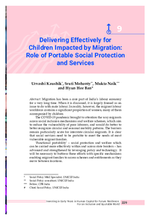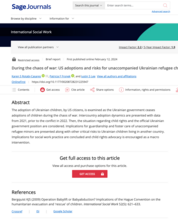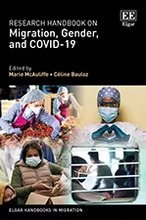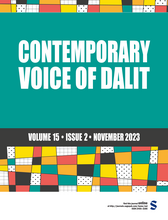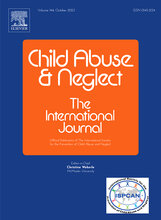Displaying 1 - 10 of 809
This report presents an analysis of focus group discussions (FGDs) conducted over the course of December 2023 and January 2024 with children affected by the conflict in Ukraine, including those displaced within Ukraine as well as those in Romania, Moldova, and Georgia.
This chapter highlights the need for social protection and welfare benefits to be portable with the ability for migrants families to access entitlements as they move between locations. This chapter focuses on how this is implemented in India's labour economy.
This article examines the adoption of Ukrainian children, by U.S. citizens as the Ukrainian government ceases adoptions of children during the chaos of war. Intercountry adoption dynamics are presented with data from 2021, prior to the conflict in 2022.
This webinar explored the role of the Catholic Church in responding to children who are migrating alone or who are at risk of or have been separated from their families in the context of migration.
This chapter is part of the "Research Handbook on Migration, Gender, and COVID-19" and explores the gender and youth dimensions of return from GCC States to the East Africa subregion, focusing on three countries: Uganda, Kenya and Ethiopia.
This chapter, which is part of the "Handbook of Human Mobility and Migration" reviews the literature on child migration, highlighting how children compare from adults in their migratory aspirations and migration decision-making, as well as in their experiences in receiving countries in the European and US contexts, where groups of children such as unaccompanied minors benefit from humanitarian protections unavailable to adults.
The ‘Supporting Integration’ toolkit documents and shares good practice guidance for practitioners working with child migrants. The toolkit was developed as part of a three year project which involved research into the integration of children moving from the Middle East to Europe, and aims to enhance integration support and services, ensuring that children and young people are provided with a care that fosters their development and well-being.
Judge Raul Pangalangan International Criminal Court Judge (2015 – 2021)
The article grapples with the tacit interplay of poverty, caste, and gender and its effects on the education of children in a village. It explores how pandemic-induced school closure impacted the life chances of marginalised children during and after the pandemic in the ‘deprived geography’ of rural Madhya Pradesh, India.
This study aimed to investigate the lived experiences of unaccompanied refugee children in Jordan and shed light on their unique challenges and needs.


